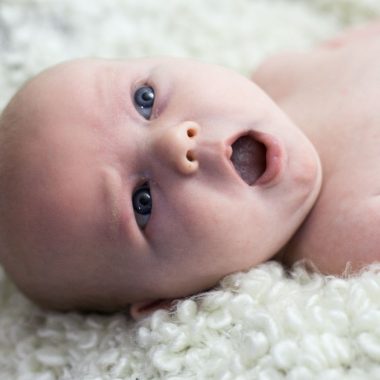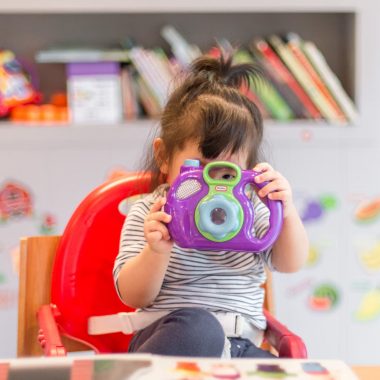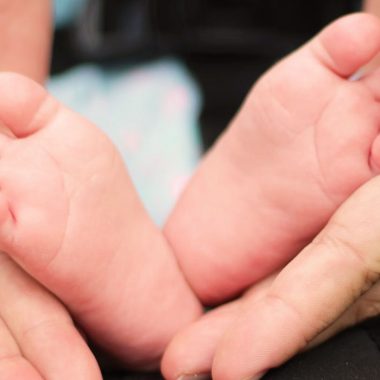The umbilical cord is a tube-like, flexible structure surrounded by a jelly-like substance. It is the lifeline between the baby and the pregnant mother, and for that reason, it has very important functions:
- It ensures consistent and constant oxygen and nutrient-rich blood flow to your baby.
- It carries away the baby’s waste products.
- It connects your baby to your placenta and contains two arteries and one vein.
After your baby is born, they no longer need an umbilical cord. Your baby can now consume food and breathe air on their own. However, your baby will require umbilical cord care until the small stump remaining dries up and falls off.
Taking appropriate care of your baby’s umbilical cord is very important. Usually, a newborn’s umbilical stump falls off within two weeks after birth. Until that occurs, take great care to treat it gently.
In this article, you will read more about umbilical cord care following birth.
What happens to my baby’s umbilical cord when they are born?
Congratulations on the arrival of your precious little one! Now that your baby has been born, they are able to breathe and feed independently, which means that the umbilical cord is no longer needed.
As your doctor assists with the delivery, they will carefully place a clamp on your baby’s umbilical cord and then proceed to cut it, leaving a short piece attached to your baby’s belly button.
Once the cord is cut, the flow of oxygen and nutrient-rich blood from you to your baby is halted. This short piece that remains is referred to as the stump, and it will gradually dry out and shrink as time goes by.
Over the course of a few days, you’ll notice the stump changing in color from yellowish-green to brown to black before it eventually falls off. This is a natural process and nothing to worry about.
ALSO READ: Key Signs of Speech and Language Delays in Your Child
How to take care of your baby’s umbilical cord?
As a mother, taking care of your newborn’s umbilical cord is important, and your baby’s doctor will provide you with specific instructions on how to do so. However, there are also some general rules to keep in mind when it comes to caring for the umbilical cord after birth.
Here are a few key points to consider:
- Keep it clean and dry: It’s important to maintain the cleanliness and dryness of the stump. If the stump gets dirty, clean it gently with a wet washcloth and pat the area dry using a clean cloth. Refrain from using soap, as it can irritate your baby’s delicate skin.
- Expose it to air: Regularly exposing the base of the stump to air can help it dry out.
- Give your little one sponge baths: Until the umbilical cord stump falls off, avoid giving tube baths to your baby. A sponge bath is sufficient for keeping your baby clean.
- Be delicate when diapering: Avoid covering the stump with the top of the diaper. Some diapers come with cutouts specially designed for the cord area. Also, change wet and dirty diapers frequently to prevent them from leaking upwards toward the navel. We want to avoid anything that could hamper the healing process or contribute to an infection.
- Dress your baby delicately: Choose loose-fitting clothing that doesn’t press against the stump or outfits with a special cutout for the area.
- Refrain from touching or pulling at it: Allow the stump to fall off on its own. Never try to pull it off, even if it appears to be connected by only a tiny thread. A small amount of blood may be expected when the cord falls off. However, if the umbilical cord stump does not fall off by the time your baby is 1 or 2 months old, consult your doctor.
If you notice any of the following symptoms around your baby’s umbilical cord, make sure to contact your doctor right away:
- Bleeding from the end of the cord or the area near the skin
- Moisture on the cord, an unusual odor, or discharge from it
- Swelling or redness of the skin around the navel
It is always better to be cautious and check with your baby’s doctor if anything seems off.
ALSO READ: What Is Positive Parenting?
What are the key principles of umbilical cord care?
The fundamental principle of umbilical cord care is to keep it clean and dry. This means avoiding harmful practices such as applying powders, lotions, or oils, as they can trap moisture and lead to bacterial growth. By keeping the umbilical cord clean and dry, you can help promote healing and ensure your baby stays healthy.
What does a healthy umbilical cord look like?
A healthy umbilical cord is plump in appearance and pale yellow in color. A normal cord has two arteries (small, round vessels with thick walls) and one vein (a wide, thin-walled vessel that usually looks flat after clamping). One of the umbilical arteries would visibly appear to protrude from the cut edge.
Knowing these characteristics of a normal umbilical cord can help parents and caregivers monitor the baby’s health and quickly identify any abnormalities or issues that may require medical attention.
ALSO READ: Unlock Your Baby’s Genius – Brain Boosting Activities for Babies
Why is it important to keep the umbilical cord dry?
Keeping the umbilical cord stump and surrounding skin clean and dry is important as it helps prevent infections. It also allows the umbilical cord to heal faster and fall off.
How often should I clean my baby’s umbilical cord?
Until the umbilical cord stump falls off and the belly button is healed, you should clean around it. Keeping the area clean is encouraged and does not hurt your baby in the least bit.
You will notice changes in colors as it dries – the umbilical cord, which is white at birth, will darken as it dries.
When does the umbilical cord fall off?
The umbilical cord usually falls off within a couple of weeks after birth.
According to the American Academy of Pediatrics (AAP) the umbilical cord stump usually falls off one to three weeks after birth. However, it can also take up to 4 weeks. In the meantime, treating your baby’s umbilical cord gently is very important.
ALSO READ: Teething In Babies: Symptoms, Timeline, and Remedies
What to do when the umbilical cord falls off?
Once the cord has fallen off, you’ll notice a small, healing belly button on your baby’s tummy. It’s important to keep the area clean and dry to prevent infection. You can clean the area gently with a damp washcloth and avoid using soap or alcohol. It’s also a good idea to dress your baby in loose-fitting clothing as it helps their skin breathe.
Sometimes you might notice a small raw spot or a blood-tinged fluid leaking. Experts say that this is normal. But if you notice more bleeding or any signs of infection, such as redness, swelling, or discharge, contact your baby’s doctor right away.
How to deal with an infected umbilical cord or belly button?
A healing umbilical cord stump rarely gets infected, but when it does, the condition is called omphalitis. This usually occurs during the neonatal period, i.e., the first 4 weeks following birth.
Below are some telltale signs of an infected umbilical cord or belly button:
- Red skin or a red, swollen appearance at the base of the cord
- A fluid-filled lump on or near your baby’s umbilical cord stump
- Oozing pus or discharge
- Bleeding from the scab (though a little dried blood is normal)
- Foul smell
- Fever or lethargy
- Low appetite
- Weak muscle tone
- Abdominal swelling
- Crying when you touch the cord or the area around it
It is crucial to keep an eye out for any signs of infection. If you observe any symptoms of infection, such as pain or discomfort, it is essential to seek medical attention immediately.
ALSO READ: When Do Babies Start Walking?
What to do if the umbilical cord or belly button is bleeding?
Once the umbilical cord stump falls off, you may notice a few drops of blood on your baby’s belly button. This is considered normal. However, it is important to monitor the area for any additional bleeding. If a small amount of bleeding lasts for more than three days, it is advisable to inform your baby’s doctor.
In case of heavier bleeding, apply direct pressure on the area for ten minutes, repeating the process twice. If the bleeding persists, or there is a bloodstain that’s more than two inches across, it is crucial to contact or visit your doctor immediately.
Continuous bleeding can be a cause for concern in infants, and prompt medical attention should be sought.
What is an umbilical granuloma?
An umbilical granuloma is a small, pinkish-red lump of tissue that forms in the belly button after the umbilical cord falls off. It’s caused by the body’s natural healing process and is relatively common, affecting around 1 in 500 newborns. While it’s not usually painful or harmful, it can sometimes cause discharge or bleeding.
Umbilical granulomas are generally not harmful, but they can be uncomfortable for your baby. It’s important to contact your baby’s doctor if you notice any signs of umbilical granuloma, as it can sometimes lead to an infection.
If the granuloma stays for longer than a week you should contact your baby’s doctor. With proper medical attention, most cases of umbilical granuloma can be resolved without any further complications.
ALSO READ: Dry Skin In Babies: Causes, Symptoms and Tips
What is umbilical hernia?
An umbilical hernia is a condition that can be mistaken for an umbilical granuloma. It appears as a small bump or bulge under the baby’s belly button when the intestine protrudes through the stomach muscle wall in the center of the navel. They are most common in infants under 6 months and affect about 20% of infants. However, umbilical hernias can also affect older children and adults.
Umbilical hernias are painless and become more noticeable when your baby cries. Usually, the hernia will heal on its own within 18 months. However, if the hernia doesn’t heal by the time the child turns five years old, surgical repair may be necessary to fix the abdominal wall.
What is umbilical cord prolapse?
Umbilical cord prolapse is a rare but serious complication during labor and delivery. It occurs when the umbilical cord slips through the cervix and into the birth canal ahead of the baby.
This can lead to compression of the cord, resulting in a decrease in the baby’s oxygen supply. It happens in approximately 1 in 300 births and can be life-threatening for the baby.
Some risk factors for umbilical cord prolapse include:
- premature birth
- low birth weight
- abnormal presentation of the baby, e.g., the baby is not in a head-down position (cephalic presentation)
- long umbilical cord
- too much amniotic fluid
- twins or multiple pregnancies
For the most part, umbilical cord prolapse doesn’t cause any problems for babies.
Fortunately, doctors can detect umbilical cord prolapse by monitoring the baby’s heart rate and performing a pelvic examination on the mother. Immediate medical attention is required if umbilical cord prolapse is suspected.
References: wedmd.com, urmc.rochester.edu, healthychildren.org, whattoexpect.com, clevelandclinic.org, ww.pregnancybirthbaby.org.au










